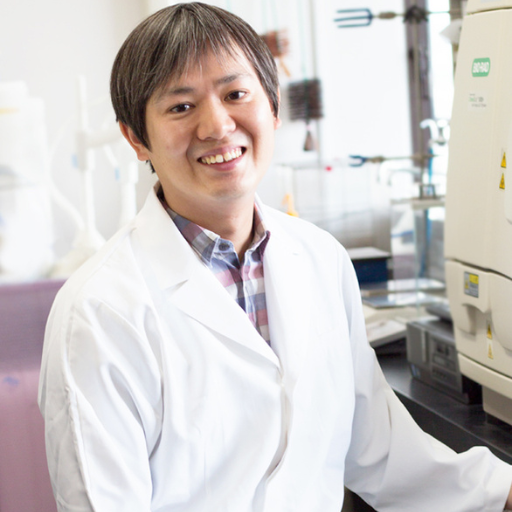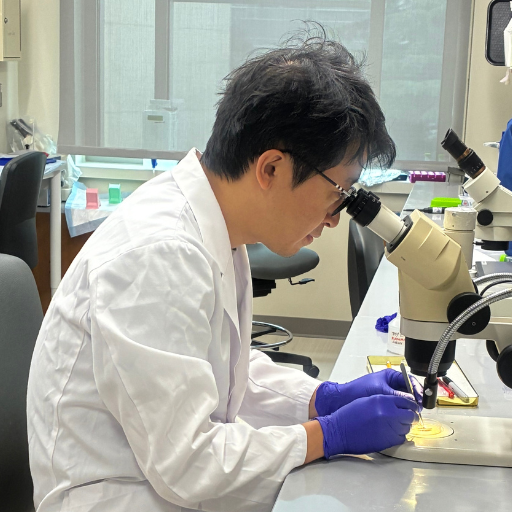Macrophage Origin and Function During Experimental Wet Macular Degeneration

Principal Investigator
Jeremy Lavine, MD, PhD
Northwestern University Feinberg School of Medicine
Chicago, IL, USA
About the Research Project
Program
Award Type
Other
Award Amount
$450,000
Active Dates
July 01, 2021 - September 30, 2024
Grant ID
M2021016N
Mentor(s)
Harris Perlman, PhD, Northwestern University-Chicago Campus
Amani Fawzi, MD, Northwestern University Feinberg School of Medicine
Goals
We will determine how microglia, classical, and non-classical monocyte-derived macrophages influence new blood vessel growth during a spontaneous model of experimental wet macular degeneration. In Specific Aim 1, we will show that classical monocyte-derived macrophages stimulate new blood vessel growth, identify subtypes of classical monocyte-derived macrophages, and determine which subtype promotes new blood vessel growth. In Specific Aim 2, we will demonstrate that non-classical monocyte-derived macrophages inhibit new blood vessel growth, determine which macrophage subsets are derived from non-classical monocyte-derived macrophages, and identify the role of microglia in new blood vessel growth.
Summary
Wet age-related macular degeneration (AMD) is a common cause of vision loss from new blood vessel growth. Current treatment includes frequent eye injections that inhibit a single blood vessel growth factor. Despite this advance, 1/3 of patients still lose vision. Macrophages are immune cells that can perform many functions, and are found in new blood vessel growths from patients with wet AMD. Macrophage function is determined by their location and origin. Macrophages originate from two types of blood precursor cells in local tissue: classical or non-classical monocytes. Classical monocyte blockade reduces experimental wet AMD, while inhibition of non-classical monocytes exacerbates experimental wet AMD. Our premise is that there are macrophage subtypes, and classically-derived macrophages promote wet AMD, while non-classical macrophages block wet AMD. Our preliminary data identifies a macrophage subset that expresses blood vessel growth factors derived from classical monocytes, and present in patients with wet AMD. In Aim 1, we will show that blockade of this specific macrophage subtype prevents experimental wet AMD. In Aim 2, we will identify non-classical monocyte-derived macrophage subsets and demonstrate that they inhibit experimental wet AMD. These experiments will set the stage for new cell-based therapies that have the advantage of inhibiting multiple pathways of blood vessel growth, leading to improved vision for wet AMD patients.
Unique and Innovative
Our studies are unique because we use advanced methods in a spontaneous wet macular degeneration model. We perform multiparameter flow cytometry panel for 10-20 color discrimination, which permits us to identify macrophage subsets in a highly specific manner. In addition, we use state-of-the-art double hit mouse models to specifically deplete macrophage subtypes. These techniques will determine the mechanism by which different macrophage subsets stimulate new blood vessel growth during experimental wet macular degeneration.
Foreseeable Benefits
Our study is designed to detect macrophage subtypes that either increase or decrease blood vessel growth during wet macular degeneration. These results could translate into macrophage subset therapy. Cell-based therapies are advantageous over single-molecule therapies because they can target multiple pathways by which macrophages influence new blood vessel growth. By identifying unique markers for macrophage subsets, therapeutics can be designed to either deplete blood vessel activating macrophages or stimulate blood vessel inhibiting macrophage subtypes.
Related Grants
Macular Degeneration Research
How Aging of the Immune System Affects Age-Related Macular Degeneration
Active Dates
July 01, 2025 - June 30, 2028

Principal Investigator
Masayuki Hata, MD, PhD
Current Organization
Kyoto University
How Aging of the Immune System Affects Age-Related Macular Degeneration
Active Dates
July 01, 2025 - June 30, 2028

Principal Investigator
Masayuki Hata, MD, PhD
Current Organization
Kyoto University
Macular Degeneration Research
Microglia’s Roles in AMD to Inform Therapies for Vision Loss Prevention
Active Dates
July 01, 2025 - June 30, 2027

Principal Investigator
Nobuhiko Shiraki, PhD
Current Organization
Duke University School of Medicine
Microglia’s Roles in AMD to Inform Therapies for Vision Loss Prevention
Active Dates
July 01, 2025 - June 30, 2027

Principal Investigator
Nobuhiko Shiraki, PhD
Current Organization
Duke University School of Medicine
Macular Degeneration Research
The Novel Role of an Intracellular Nuclear Receptor in AMD Pathogenesis
Active Dates
July 01, 2024 - June 30, 2026

Principal Investigator
Neetu Kushwah, PhD
Current Organization
Boston Children’s Hospital
The Novel Role of an Intracellular Nuclear Receptor in AMD Pathogenesis
Active Dates
July 01, 2024 - June 30, 2026

Principal Investigator
Neetu Kushwah, PhD
Current Organization
Boston Children’s Hospital


